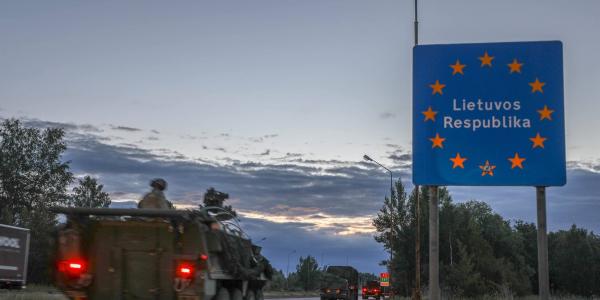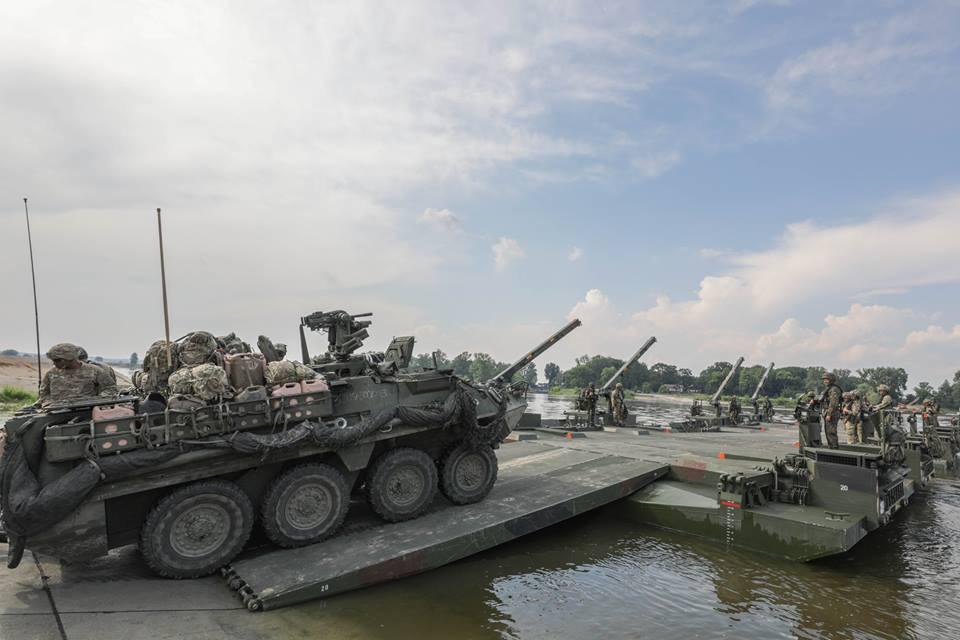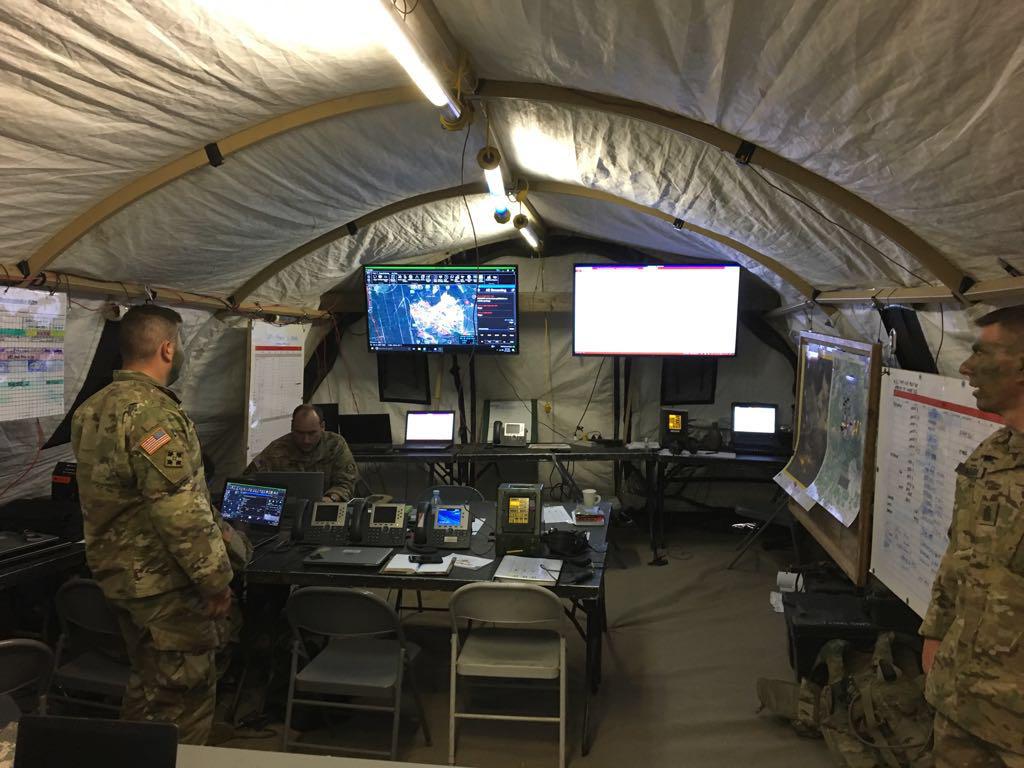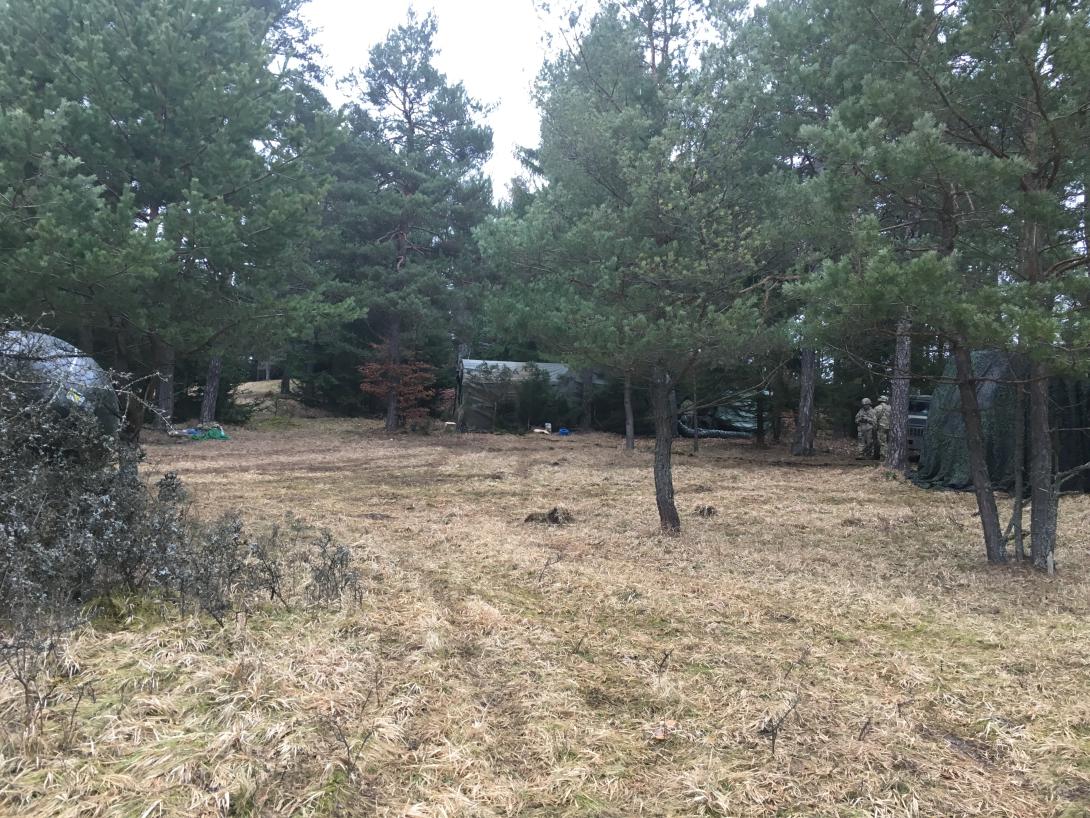Exercise Reveals Capabilities Gaps
The current process for mission command modernization is not keeping pace with technology, which will dramatically impact the future battlefield. Despite massive technological advancements, the U.S. Army continues to struggle with the upper tactical internet. The service’s current technology fails to provide a near instantaneous, resilient, on-the-move communication capability and is at risk of being outpaced by both industry and potential adversaries.
Senior Army leaders have spoken about the critical need for nimble command posts that can move quickly and often. Army Chief of Staff Gen. Mark Alexander Milley, USA, emphasized that command posts need to move every 24 to 36 hours. However, the Army’s doctrine, organization, training, materiel, leadership and education, personnel, facilities and policy solutions evolve slowly, and leaders see minimal change on the tactical level. Based on current authorizations, squadron-level mission command nodes capability gaps impede decision making on the move, prevent collaborative planning while dispersed and limit the ability to synchronize operations.
In June, the 2nd Squadron, 2nd Cavalry Regiment participated in U.S. Army Europe’s exercise Saber Strike 2018. The task force marshaled and traveled to and from Germany to northern Lithuania in 181 vehicles. The exercise identified a number of capabilities gaps and resulted in several lessons learned.
During the exercise, the squadron rehearsed an ammunition draw from pre-positioned stocks, participated in a regimental attack, conducted a contested wet gap crossing and executed a squadron air assault to seize an airfield. Each one of these activities required varying degrees of coordination and tested the squadron’s communication infrastructure and mission command nodes.
The squadron’s command posts mirrored current doctrine, consisting of the main and tactical operations centers, Combat Trains Combat Posts (CTCP) and Field Trains (FTCP) Command Posts. Main tactical operations centers are responsible for all warfighting functions except sustainment. The tactical command post, or TAC, travels near the forward line of troops to control critical events on the battlefield. The CTCP and FTCP plan and execute sustainment.
Tactical road marches spread the command posts across an average area of more than 146 miles, while tactical scenarios were 50 to 77 miles. The squadron had a standard communications complement of FM, high frequency, tactical satellite and joint capabilities release systems in addition to 10 Microsoft Windows-version Tactical Assault Kits (WinTAK) that communicated over an encrypted cellphone connection.
The squadron relied heavily on WinTAK to achieve near-instantaneous communication with the regiment, which was testing the Android Tactical Assault Kit as part of the integrated tactical network suite. A cellular data connection using Wi-Fi was the primary connection point to the network because it provided reliable communications with subordiante troops.
The squadron used FM and joint capabilities release systems with some success for decision-making on the move and synchronizing operations but had no means to execute collaborative planning while dispersed. WinTAK facilitated distributive planning and acted as the common operating picture for the regiment. This approach, along with its near-instantaneous and reliable chat function, made WinTAK the unit’s primary means of communication while traveling to and from Lithuania. WinTAK chat provided immediate communication to adjust routes, plan refueling operations, recover assets, shift personnel from broken vehicles and assign maintenance duties. Using this method, the maintenance team helped troubleshoot problems, acquire parts and prioritize repairs before arriving at the next stop.
As the squadron attacked in conjunction with the regiment, WinTAK provided position location information from adjacent units through the integrated tactical network. It also enabled the squadron to update the regimental common operating picture in near-real time without establishing the satellite transportable terminal for the upper tactical internet (TI). Common graphics pushed through WinTAK allowed the squadron to negotiate the wet gap crossing efficiently, despite unforeseen challenges on the far side. Rifle troops flew WinTAK forward on the air assault, which provided critical reporting when FM networks failed.
Even with a very limited number of systems, WinTAK greatly enhanced decision-making on the move and improved the ability to synchronize operations. However, WinTAK did not fulfill all the functions of command post operations and was only tested by reaching the cloud through a cellular data connection for beyond line-of-sight communication.
Establishing the upper TI takes time and infrastructure, creating a significant headquarters signature that can be targeted. While WinTAK improves the command post function, it does not replace the upper TI that enables Command Post of the Future and Distributed Common Ground System–Army systems to feed real-time operational and intelligence images. The upper TI also enhances the Advanced Field Artillery Tactical Data System’s ability to conduct long-range digital fires when outside the line-of-sight communication range.
Interfaces such as the Global Combat Support System–Army (GCSS-A) also are required to order parts and maintain vehicles, and the Integrated Personnel and Pay System–Army is needed to maintain human resource records. Army Webmail is used to communicate with outside elements.
Based on fiscal year 2019 Modification Table of Organization and Equipment authorizations, the upper TI is almost nonexistent at the squadron level. The authorizations only afford two of the four mission command nodes with upper TI, making geographic colocation the only means to plan or monitor operations collaboratively. The TAC remains without the upper TI, leaving the commander without situational awareness when separated from the main command post. It was virtually impossible to understand, visualize, describe, direct, lead and assess operations during the Saber Strike five-day tactical road march without Wi-Fi.
These tasks were essential for the squadron moving north into combat during the exercise. FM and joint capabilities release systems were insufficient. Collaborative planning also suffered among the staff. Although WinTAK provided a means to communicate and share graphics, 10 systems were not enough to control the movement and conduct planning. The only method available was to geographically mass the TAC with the main tactical operations center to execute planning after establishing the upper TI.
Modification Table of Organization and Equipment authorization also does not provide the CTCP with the upper TI, yet the node must connect to GCSS-A to manage logistics. The S1 Section located at the CTCP tracks personnel, replacements, casualties and processes actions, including awards and benefits, which require upper TI access. Without access, the CTCP needs to collocate with either the main tactical operations center or the FTCP, the only mission command nodes with access to upper TI. As a result, the physical and electromagnetic signature grows.
Finally, the FTCP has a small combat support system very small aperture terminal, which gives it access to a satellite network and upper TI for GCSS-A. The line-of-sight Combat Service Support Automated Information System Interface boasts a 35-mile range but has significant issues with bandwidth and sending a signal through obstructions such as trees and buildings. Both systems require a stationary base to operate. They provide the FTCP with the ability to manage maintenance but little else, including collaborative planning.
The lack of resilient on-the-move communication prevents the synchronization of operations and logistics. Without a robust squadron-level upper TI, the commander and staff cannot operate small, dispersed and nimble mission command nodes that enable collaborative planning. Additionally, the commander and staff cannot rapidly communicate across vast distances, preventing responsive logistics to support dispersed units.
During the Saber Strike exercise, WinTAK could link these mission command nodes using cell data and provided a platform for distributive planning and improved synchronization resulting in more informed decision making. However, WinTAK provides a separate communications platform and common operating picture and does not link the Army’s mission command systems into a larger picture or allow access to mandated systems of record.
Until the upper TI finds an on-the-move capability, faster set up and smaller signature, it appears commanders must make a choice. Larger mission command nodes using the satellite transportable terminal and command post node system provide increased situational awareness at the cost of signature. Smaller nodes or more frequent moves obstruct informed decision making, collaborative planning and synchronized operations as connections with Army mission command systems are broken and reestablished, but it might keep warfighters alive.
Exercise Saber Strike demonstrated that the technology to provide near instantaneous, resilient, on-the-move communication is available. However, instead of providing a standard solution to the problem, the Army needs to test and innovate across multiple squadron level formations, relying on warfighter feedback rather than only using network integration evaluations.
An evolutionary approach could be used. The Army recently used an “adapt-and-buy” method of acquisition for the Stryker Dragoon, which took less than two years from funding to prototype delivery. This is far faster than the standard acquisition process with long procurement timelines that provide the optimal solution far too late.
If a similar rapid procurement approach is taken to mission command nodes at the squadron level, the service could optimize faster and keep up with technology. This is especially true if the Army moves away from a lowest price technically acceptable consumer solution and toward a customer-based, best-value solution. Additionally, the service can work with companies during testing and, through immediate user feedback, update software and hardware.
The capabilities to meld communications systems effectively are available. For warfighters to succeed on the future battlefield, a transformation in acquisition methods is crucial to taking advantage of cutting-edge technologies based on lessons learned and user input.
Maj. Michael L. Hefti, USA, is the operations officer, 2nd Squadron, 2nd Cavalry Regiment. Lt. Col. Christopher D. L’Heureux, USA, is the squadron commander, 2nd Squadron, 2nd Cavalry Regiment.









Comments